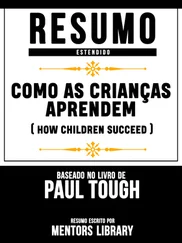But direct clients have their drawbacks, such as:
• Sometimes, they have no idea how you work, other than that you change documents from one language to another. 12,000 words for tomorrow? Some direct clients don’t know that that’s laughable. And while you’re at it, why don’t you translate into your non-native language? Or interpret for their upcoming conference? It’s not their fault, it’s just not their industry.
• They may need you only sporadically, or for huge amounts of work at one time. Some direct clients only need a translator for a small job a couple of times a year, for example when they issue earnings reports or press releases. Others may have an onslaught of documents (grant applications, RFPs) a couple of times a year, and then they need 100,000 words in a month. So you absolutely must have a partner or backup person if you want to be successful in the direct client market. Corollary: you really don’t want to turn down their work if you can help it. In the agency market, you can pretty much accept and decline projects at will. As long as you accept at least some of the time, the agency will likely call you again. But if you bail out on a direct client at a key time, your relationship with them may be over, because they have to find someone else immediately (see reference to partner/backup above).
3.8.1 Working with individuals
Individuals (often, people who need official documents like birth certificates, educational records and driver’s licenses translated for immigration purposes) can be great to work with, or can be a nightmare to work with, depending on how you set the relationship up. Individuals represent an appealing market because their translation needs often don’t justify a translation agency’s overhead; so as a freelancer, you can charge a comparatively high rate while still charging less than what the individual would pay an agency. The keys to working successfully with individuals are:
• Promote the fact that you provide this service; create a dedicated web page for your official document translation services.
• Streamline the process: on your dedicated web page, list all of the information that someone needs in order to decide whether to hire you. Consider establishing a set price per page for official document translations. Avoid issuing custom quotes or negotiating about rates. Just say, “My fee is X dollars per page, so the total cost for your batch of documents would be Y.”
• Ask for/require advance payment. This completely eliminates the risk of not getting paid, which is a major reason why many translators don’t want to work with individuals.
In the US, one complication in working with individual clients is the lack of a standard definition of “a certified translation.” In some cases, a certified translation must be done by a certified translator; in other cases, a certified translation simply must be accompanied by a certification statement signed by the person who translated the document. If you are not ATA-certified, make sure to clarify with your individual clients about the certification requirements for their documents.
3.9 A bit about interpreting
As you explore a career in translation, consider whether you would like to focus your business exclusively on translation, or include interpreting in your range of services. Like translation, the market for interpreting depends largely on your language pair(s), and unless you do telephone interpreting, is more location-dependent than translation since you need to be in the same place as your clients.
Interpreting has several “modes,” the primary ones being simultaneous, where the interpreter talks at the same time as the speaker; consecutive, where the interpreter listens to the speaker and takes notes, then interprets what the speaker said; and sight translation, where the interpreter reads a printed document aloud in a different language from the language in which the document is written. Simultaneous interpreting is probably the most common mode, since it is used at the United Nations, in court, and in various other conference-type settings. Consecutive interpreting is often used during one-on-one business meetings, for example when a party to a lawsuit is giving a deposition in an attorney’s office. Simultaneous interpreting often requires the interpreter and the listeners to use some type of audio equipment such as a portable microphone and earphone receivers, while consecutive interpreting is most often done without equipment.
Interpreting demands very different skills than translation. While translators are stereotypically detail-oriented introverts who don’t mind spending an hour finding the perfect translation for a word, interpreters must be able to think on their feet and work with little or no advance preparation. Translators most often work alone at home, while interpreters are often literally in the spotlight, standing next to a court witness, hospital patient or head of state and communicating for him or her.
Until the advent of conference calling, interpreters had to be in the same place as their clients, and court and conference interpreting is still heavily dependent on on-site interpreters. However, over-the-phone interpreting is becoming more popular, especially in areas where it’s hard to find on-site interpreters. Many translation agencies also schedule interpreters, and courts, hospitals and schools may employ in-house interpreters.
One major difference between interpreting and translation is that interpreters often work in both “directions” of their language pair, so must be highly proficient in speaking their non-native language; many high-level conference interpreters consider themselves to have two native languages, rather than one native language and one or more second languages. Interpreters are paid by the hour or by the day, and pay varies widely. In some areas of the U.S., English ↔ Spanish court interpreters might make $25 or $30 an hour, while high-level conference interpreters might make $700 per day or more.
As with translation, interpreters can choose whether to work with agencies, direct clients or both. Since interpreting is so location-dependent, it can be really helpful to talk to interpreters who work in your local area in order to find out what types of clients they work for. For example in some areas, certain clients such as hospitals or courts may work only through interpreting agencies, while other clients such as law firms may be eager to work directly with interpreters. In addition, if you are qualified to do simultaneous conference interpreting, clients may be willing to pay your travel expenses to come to where their conferences are taking place.
3.10 How do translators set their rates?
Translators are generally paid by the word. The word count may be based on the source or target word count and may be calculated by the single word (most common in the U.S.) or per thousand words (most common in the U.K.). Payment is sometimes made by the line (most common in Germany), with a line being comprised of a certain number of characters (in Germany, generally 55). For projects where charging by the word would result in a ridiculously low payment, for example when translating an advertising slogan, translators are often paid by the hour. Translations of official documents such as birth certificates may be billed by the page. Many translators have a minimum charge for small projects, for example a flat fee for projects up to 250 words. It’s also common for translators to add a premium for rush work, or to offer a discount for a large projects or ongoing work.
The actual per-word rate depends on your language combinations and specializations, and also on what your clients are willing to pay. Asking “How much do translators charge?” is like asking, “How big is a ball of yarn?” The variation in translation rates is enormous; if you visit online translation marketplaces such as Translators Cafe translatorscafe.com, or ProZ.com proz.com, you’ll see an abundance of translators willing to work for just a few cents a word, while a highly specialized financial, legal or technical translator working for direct clients might make 40 or more cents per word. In addition, many translators are reluctant to publish or even discuss their rates for fear of being targeted by antitrust actions.
Читать дальше
![Коринн МакКей How to Succeed as a Freelance Translator [calibre 3.46.0] обложка книги](/books/402693/korinn-makkej-how-to-succeed-as-a-freelance-transl-cover.webp)


![Джон Ирвинг - Našlė vieneriems metams [calibre]](/books/384320/dzhon-irving-naŠle-vieneriems-metams-calibre-thumb.webp)
![Джонатан Димблби - Barbarossa - How Hitler Lost the War [calibre]](/books/385421/dzhonatan-dimblbi-barbarossa-how-hitler-lost-the-w-thumb.webp)







